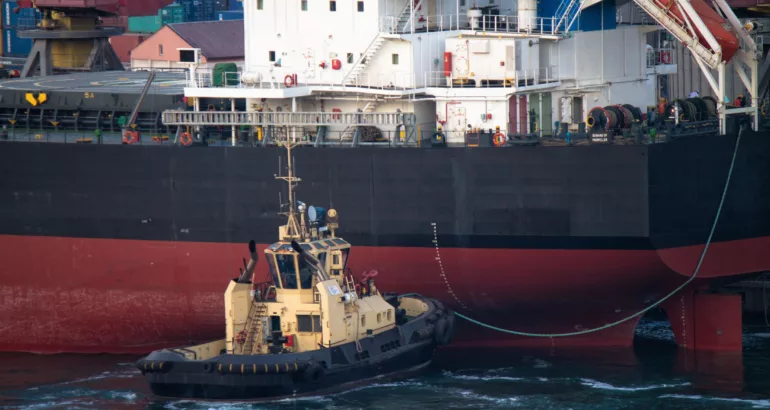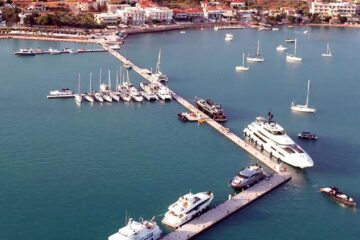Tugboat Mooring Line Left Connected, Tugboat Hits Barge, One Overboard
An employee was working as a deckhand on a 3,800-hp, diesel-fueled tugboat that was 13 feet, seven-inches long and 35 feet, five inches wide. The tugboat had been secured to a fleet of barges that were being built along the bank of the Ohio River.
The tugboat was secured to the fleet by three 2.5-inch rope mooring lines. One line was secured at the bow of the tugboat; one line was secured at the stern of the tugboat; and a third “breast line” was secured at the back of the boat. The deck hands released the bow line and the stern line but forgot to release the breast line. Because the tugboat was facing up river, once the bow line was removed, the bow began to swing away from the fleet of barges.
The employee realized that the breast line was still attached and radioed the pilot and other deckhands. Due to a swift current, the pilot was unable to return the bow of the boat to the fleet. The pilot backed the tugboat so the stern of the tugboat would be parallel to the fleet, to relieve tension on the mooring line so that it could be released. The bow of the tugboat continued to turn downriver. When the pilot realized that the port stern corner of the tugboat was going to make contact with a barge, he radioed to the crew to “watch the bump,” which alerted the crew that hard contact was imminent and that they needed to hold on to something secure.
When contact was made, the employee fell over a bull rail and into the water. The bull rail was a 24-inch-high wall located around the stern of the tugboat. “Man Overboard” was radioed to the pilot. He shut the engine down and sounded the general alarm. Other deckhands were able to reach the employee with a life ring while holding securely to the rope of the life ring.
The employee was wearing a U.S. Coast Guard-approved Type V work vest and was holding on to the life ring when he was pulled underwater and under the tugboat. The breast line was cut with an ax, which allowed the tugboat to float away from the barges. A harbor boat responded to assist with the rescue. The life ring surfaced and shortly thereafter the employee resurfaced and was pulled on to the harbor boat where CPR was performed. The employee died. What went wrong?
The failure to check that all mooring lines were released caused a chain of events that led to the loss of navigational control of the tugboat. Although leaving the breast line connected might not have caused an accident were the vessels moored in still water, in a river with strong currents, the lack of control of the tugboat caused a fatal accident.
Republished from Marine Construction Magazine Issue IV, 2021









